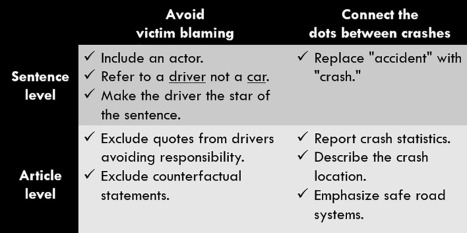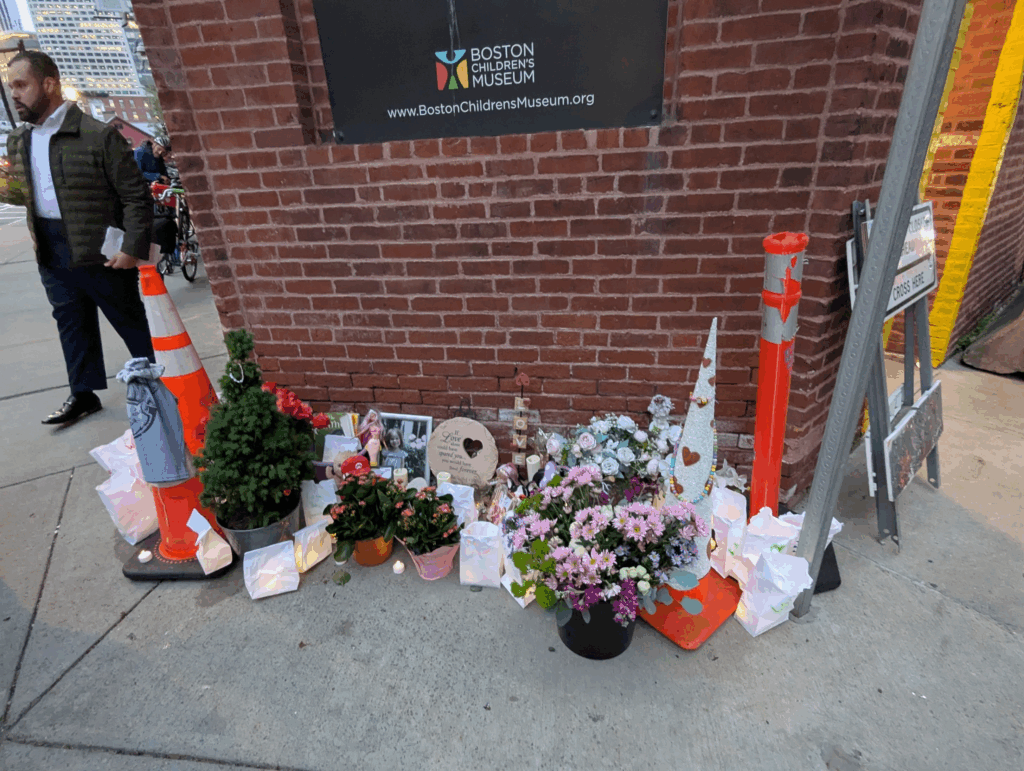Gracie’s Ride: a vigil to end traffic violence in Boston
By Anne Griepenburg
Mayor Wu touts Boston as “the safest big city in the US”, but safety isn’t only about crime. Safety is also the ability to move safely in our city regardless of how we travel. The Mayor has continued Boston’s recent focus on street safety. She has implemented best practices in locations like Centre Street in West Roxbury, and Tremont Street in the South End.
The innovative “Safety Surge” program fast-tracked long-desired traffic calming measures like speed humps on residential streets. These improvements have saved lives. A dashcam video from a delivery driver on a traffic-calmed street showed a child being hit. Fortunately, the child survived because the driver had slowed for a recently installed speed bump.
Yet for all this progress 14 pedestrians were killed by drivers in 2024, and 2025 has seen additional traffic deaths. These include 26 year old Noah Greany in South Boston and 5 year old Lens Joseph Arthur in Hyde Park. Boston has an crucial commitment to “Vision Zero“, an ambitious goal to eliminate deaths and serious crashes by the year 2030.
#Vision Zero: Real progress requires real changes
But how do we actually push the needle down to zero and prevent both road deaths and serious crashes?
We propose that the City of Boston enact 3 changes:
1) Ban right on red in Boston.
Cities that prioritize the safety of pedestrians reduce conflicts in intersections. Impatient drivers glancing only for oncoming traffic, and not children, slower crossing elders, and people on bikes risk all of our lives and limit mobility. Cambridge recently banned right on red, following a national trend. It’s time for Boston to follow suit.
2) Police report improvements.
Police reports are often repeated verbatim by the media, perpetuating passive voice and “accident” focused language. By making police crash reports more fact based, that will influence press reporting. These reports will inform the public more accurately, identifying drivers and not cars as the agent responsible for crashes, and not using value based language such as “accident” which implies inevitability.

A table explaining how to avoide passive and victim blaming language in reporting.
3) Transparency and community involvement of investigations into all fatal crashes in Boston.
Strong Towns has provided a framework called “Crash Analysis Studio”, which can inform our approach to analyzing and preventing crashes.
The goals should be as follows:
- A timely public report is created with an analysis of what factors led to the crash including road design, vehicle size and blind spots, lack of enforcement, etc.
- The report should be standardized and able to be easily aggregated for research and analysis purposes
- The report contains input from advocacy and neighborhood groups and allow for public comment
- Mitigations are noted in the report as to how future crashes could be prevented, including short, medium, and longer term improvements
- A yearly public summary report is produced that summarizes the root causes of crashes in Boston, what progress has been made, and what is left to do
Gracie’s Ride
On Wednesday May 21, 2025, community members, loved ones and the fire department gathered at the Hood Milk Bottle Plaza, near the Boston Children’s Museum, for the yearly “Ride of Silence” to honor those who have been killed by drivers on Boston streets. Our event will be called “Gracie’s Ride” in honor of Gracie Gancheva who was killed by a driver at the age of 4 on a visit to Boston with her family.


We ride to remember Gracie and the many other lives we’ve lost to traffic violence. Our community stands together and vows that we will protect the children of Boston, our friends, family, and neighbors, who should be safe on our streets. All who use Boston’s streets should expect to arrive alive when we travel in our city, and we commit to making the changes that will prevent future deaths.

